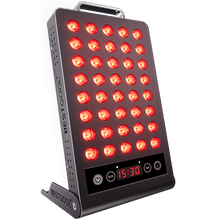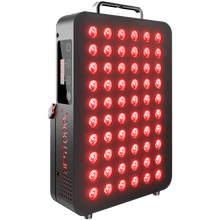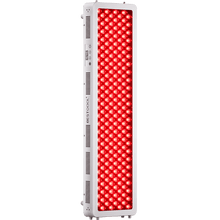Every March, tens of millions of fans watch as 68 teams compete for college basketball’s biggest prize. From Cinderella stories to last-second buzzer-beaters, March Madness is a display of raw emotion and high tension. More unforgettable moments await in the 2025 NCAA Tournament. Everything matters in preparing for a national championship, from psychological preparation to physical conditioning.
Whether you’re a die-hard fan or a casual viewer, this comprehensive guide outlines everything you need to know about the 2025 NCAA March Madness, including key dates and venues, the cultural significance of the NCAA tournament, the challenges of its grueling format, and how players need to strategize to get the most out of their bodies and minds—particularly given the increased use of red light therapy in both recovery and performance.

Key Dates & Tournament Locations
Important Dates for the 2025 Tournament
March Madness has a structured schedule from Selection Sunday to the National Championship. Here are the important dates for 2025:
- Selection Sunday: March 16, 2025
- First Four: March 18-19, 2025
- First Round: March 20-21, 2025
- Second Round: March 22–23, 2025
- Sweet 16: March 27-28, 2025
- Elite Eight: March 29-30, 2025
- Final Four: April 5, 2025
- National Championship: April 7, 2025
Host Cities and Arenas
The 2025 tournament is set to be hosted in cities and arenas throughout the USA. The First Four will be held in Dayton, Ohio, at the University of Dayton Arena. The First and Second Rounds are scheduled across multiple cities, such as Brooklyn, Denver, Pittsburgh, and Charlotte. Sweet 16 and Elite Eight regional matchups will take place in Los Angeles, Dallas, and Boston.
The semifinal and title games will be played at the Alamodome in San Antonio, Texas. It is the fifth time San Antonio has served as Final Four host, promising an electric vibe on college basketball’s biggest stage.
Legacy & Cultural Significance
March Madness's Impact on American Culture
March Madness is bigger than basketball — it’s a cultural event. Offices and schools hold bracket pools, fans ardently tune in, and underdogs become national celebrities within a week. This event draws in casual, diehard, and even reluctant basketball fans, making it a mainstay in American sports culture.
The tournament serves as a substantial economic engine. Host cities attract throngs of tourists, sell tons of merchandise, and have the world audience's eyes pointed toward them as the events unfold. Even those who normally do not watch basketball turn to the unpredictable plotlines that define the magic of March Madness.
Memorable Moments and Upsets
Every year, new Cinderella stories and gallant showings surface to make this tournament's history richer. March Madness is known for its dramatic upsets and memorable moments. Among the most iconic are:
- UMBC’s 2018 historic upset of No. 1 Virginia, as the first No. 16 seed to dethrone a No. 1 seed.
- Villanova’s buzzer-beater in 2016 to defeat North Carolina and win the National Championship
- Duke-Kentucky 1992, featuring Christian Laettner’s famous game-winning shot.
NCAA "March Madness" vs Regular Season
Single-Elimination Format Creates High-Pressure Environment
March Madness is a do-or-die tournament: You lose once, and you’re out of the hunt. Unlike the regular season, which gives teams several more chances to bounce back from setbacks, this format requires perfection in every game.
-No Margin for Error: Just one poor performance can quickly send a team packing, ending its bid for a championship.
-Big-Time Performers: Athletes must perform under pressure, as these moments could define their careers.
Tactical Intensity and Statistical Differences
The heightened stakes and uncertainty of March Madness generally lead to different tactical priorities than in the regular season.
-Defensive Efficiency: Teams value tight defense, knowing that a single, critical stop can alter the course of a game.
-Three-point Shooting: Teams have little time to prepare for opponents, so they often rely on three-point shooting to get an edge.
Physical Exertion Patterns
The structure of the tournament pushes teams to play several games in a short amount of time, increasing physical demands:
-Quick Game Pace: Fast breakaways, full-court presses, and an increasing game pace have made it critical to maintain endurance and stamina.
-Effect of Consecutive Games: Managing fatigue is crucial during and after back-to-back games, when recovery time is limited.
Psychological Stress Indicators
Mental toughness in March Madness is every bit as critical as the physical aspect. Players must perform under immense pressure.
-Making Calm Moves: Winners distinguish themselves by making smart decisions even in high-pressure situations.
-Consistent Quality Rest: Good rest is absolutely fundamental in sustaining focus, sharpness, and performance during the tournament.
Physical Preparation & Mental Readiness
Physical Preparation for High-Intensity Games
Players need to be in top shape to compete in March Madness. Strength, endurance, and agility are vital. Endurance training falls mainly into sprint drills, interval training, and high-intensity conditioning.
-Strength training focuses on explosive movements similar to jumping, sprinting, and defensive plays.
-Cardiovascular Fitness like HIIT builds cardiovascular stamina.
-Flexibility and mobility exercises are used to help avoid injuries.
The Importance of Mental Toughness
Physical ability is only one part of the puzzle; mental strength is just as important, if not more so, at the highest competitive levels. Athletes have many mental techniques that they use to prepare before big events, including
-Visualizations where athletes envision themselves making key plays in their head before a game as a way of building confidence and getting themselves in the zone.
-Meditation and breathing techniques also serve to help players stay focused and remain calm during pressure, thereby improving their decision-making in adrenaline-fueled situations.
-Encouragement from coaches and teammates promotes self-confidence, arguably the key to successful outcomes in high-pressure situations.
The Role of Red Light Therapy in Recovery & Performance
RLT use has recently surged through the sports science community as a non-invasive method for improving muscle recovery and performance in athletes. Here are a few ways RLT can offer huge advantages to NCAA athletes competing in March Madness.

How Does Red Light Therapy Work?
More specifically, low-level wavelengths of red light are used to penetrate deep into the muscles stimulating mitochondrial function and encouraging cellular repair. This leads to:
- Increased ATP production means less muscle fatigue and faster recovery.
- Anti-inflammatory Properties benefit in managing muscle soreness and joint pain.
- Improved Blood Circulation supplies tired muscles with oxygen and nutrients more efficiently.
Why Red Light Therapy Matters in March Madness?
The tournament's tight schedule creates several recovery needs for players:
-Quick Recovery Time: RLT aids in faster healing between matches.
-Injury Resistance: Minimizing swelling and stiffness allows players to function at their best.
-Mental Clarity & Sleep: RLT has been associated with better sleep cycles, which improves cognitive function and decision-making.
How Players Can Use Red Light Therapy?
Many professional teams now add in RLT devices as part of their recovery regimen. NCAA athletes can use:
-Pre-Game Therapy: Powering muscles with red light before games
-Post-match Recovery Program: Post-game to reduce sore muscles and injuries
-Sleep optimization: Red light therapy before sleep can aid in rest and recovery.
Final Thoughts
March Madness is the ultimate test of skill, endurance, and mental fortitude. In a grueling single-elimination format, teams need to take every advantage possible—including cutting-edge recovery techniques such as red light therapy.
With physical conditioning and mental preparation, along with optimal nutrition and advanced recovery techniques, present-day players can elevate their performance and maximize their chances of championship success. From nail-biting final-play finishes to annual still-in-it Cinderella teams, the 2025 NCAA Tournament is sure to deliver pressure and excitement.
References
- Borges LS, Cerqueira MS, dos Santos Rocha JA, Conrado LA, Machado M, Pereira R, Pinto Neto O. Light-emitting diode phototherapy improves muscle recovery after a damaging exercise. Lasers Med Sci. 2014 May;29(3):1139-44. doi: 10.1007/s10103-013-1486-z. Epub 2013 Nov 21. PMID: 24258312.
- Lawrence J, Sorra K. Photobiomodulation as Medicine: Low-Level Laser Therapy (LLLT) for Acute Tissue Injury or Sport Performance Recovery. J Funct Morphol Kinesiol. 2024 Sep 27;9(4):181. doi: 10.3390/jfmk9040181. PMID: 39449475; PMCID: PMC11503318.














 Small
Small

 Moderate
Moderate

 Moderate
Moderate

 Moderate
Moderate

 Full
Full



